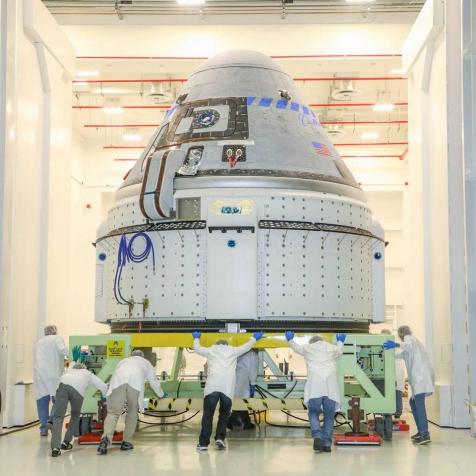
Westend61
Space Hotel Built for Luxury and Research in Low Earth Orbit by 2027
Blasting off into low Earth orbit may not be every traveler’s idea of a quiet getaway, but builders of the first space hotel are creating the ultimate exclusive destination. Voyager Station is scheduled to be operational by 2027 and will offer $5 million luxury suites, fine dining, and live shows to space tourists.
Californian company Gateway Foundation announced the construction of the space station back in 2019. Originally named the Von Braun Station, after NASA rocket scientist Wernher von Braun, the rotating wheel will consist of 24 modules incorporating the first artificial gravity systems in space.
Pilot instructor John Blincow is head of Gateway Foundation and runs the construction company Orbital Assembly Corporation that will assemble Voyager Station. “We’re trying to make the public realize that this golden age of space travel is just around the corner,” he told CNN. “It’s coming. It’s coming fast.”
But as the $5 million rooms attest to, it is not coming cheap. Projected costs for the build are estimated at $60 billion. In comparison, the International Space Station cost $150 billion and has a crew of seven, more during a handover. Voyager is projected to accommodate 100 crew and 300 guests.
Of course, when you pay so much for a space suite, it’s not just burgers and fries on the menu. Blincow aims to provide top chefs for five-star dining plus entertainment, with a celebrity roster including stars like Beyonce. On top of that, the Earth view as you spend three and a half days orbiting the planet is spectacular.
Construction will begin on Voyager station in 2026, its rotating wheel plans resembling a concept developed by NASA’s von Braun in 1952. Gateway plans to take advantage of advances made in rocket systems like Space X’s Falcon Heavy and Starship to launch huge amounts of cargo into orbit cheaply and quickly – Space X boss Elon Musk said that Starship launches could cost as little as $2 million.
First, up will be the station’s inner ring fitted with docking arms and stabilizers to hold spacecraft. Then the backbone of the station, the outer ring truss, will be attached to the docking hub using spokes. This outer ring will mount habitation modules, an access tube, and a rail transport system so people can move around, along with solar panels and radiators.
Finally, an outer habitation ring contains the pressurized housing modules themselves. Each one will have two or three internal levels and plans include a gymnasium, kitchen, restaurant and bar, and crew quarters. Privately owned modules will accommodate the hotel, villas, and commercial activity. Then government-owned modules will be used for science and training.
Artificial gravity will be created by the speed of spin on the outer ring. And to test the viability of its gravity systems the company will build a 200ft (61m) wide prototype creating gravity similar to Mars, about 40 percent that of Earth. This gravity ring will take two to three years to develop and launch, but only three days to assemble in orbit. From there it will act as a test base for technologies aboard the final space station.

Gateway Foundation
The Docking Hub (Inner Ring)
Comfort will be paramount for both visitors and crew, so artificial gravity is a crucial factor according to Tim Alatorre, one of the space station’s architects. “Microgravity is just brutal on our bodies,” he said. “We need artificial gravity – a mechanism to give us a dosage of gravity to give us the ability to live long-term in space.”
Larger projects will follow Voyager Station, with a spaceport simply called ‘The Gateway’ in planning – not to be confused with NASA’s Lunar Gateway that will orbit the moon as a staging post for landings and space exploration. More than twice the size of the 200m wide Voyager, guest capacity will be 1,250 alongside 150 crew.
Despite the financial risks – a competitor space station called Aurora shut down its operations and refunded all deposits – Alatorre is confident that Voyager is the true genesis for off-world exploration. It will “create a starship culture where people are going to space, and living in space, and working in space," he told CNN. "And we believe that there's a demand for that."


















